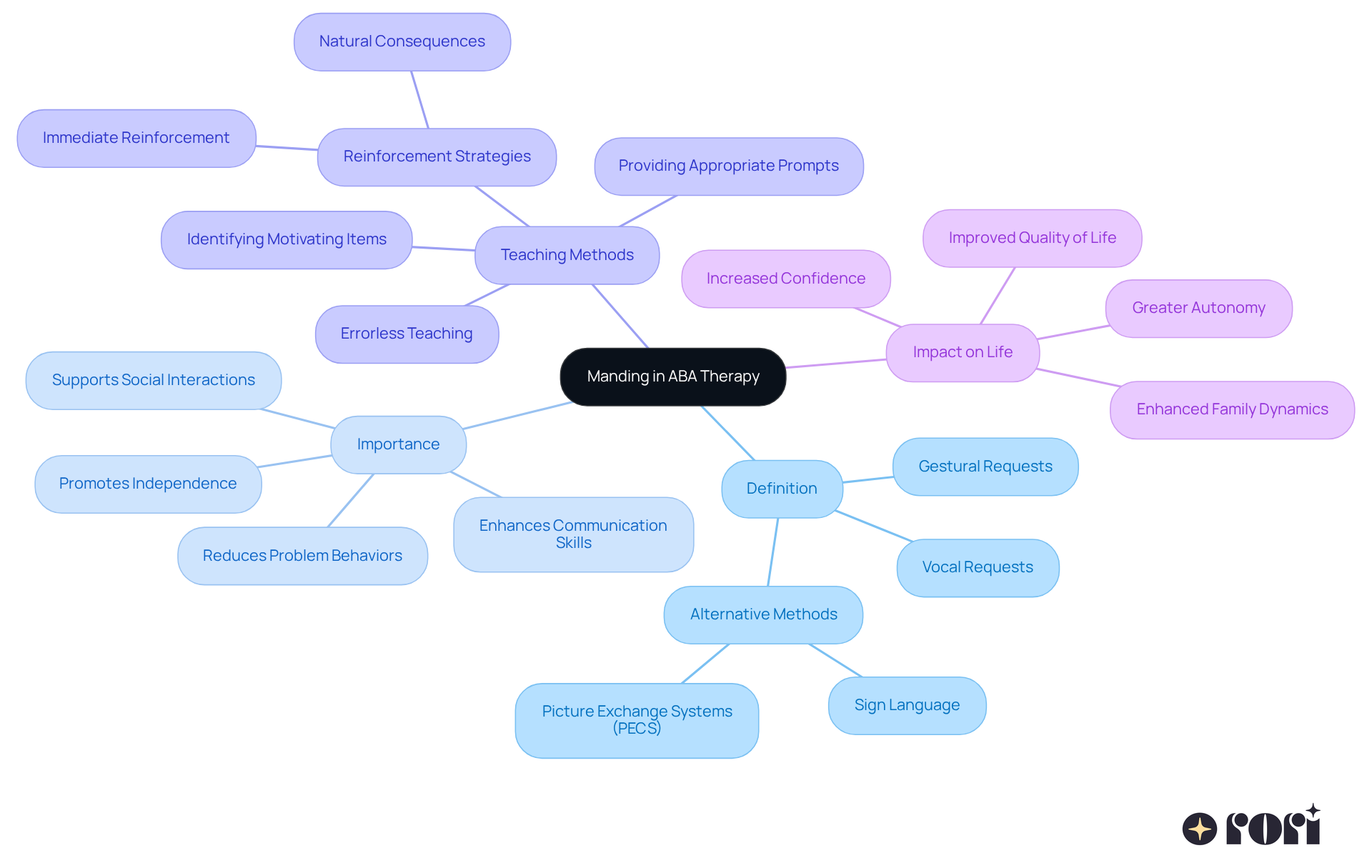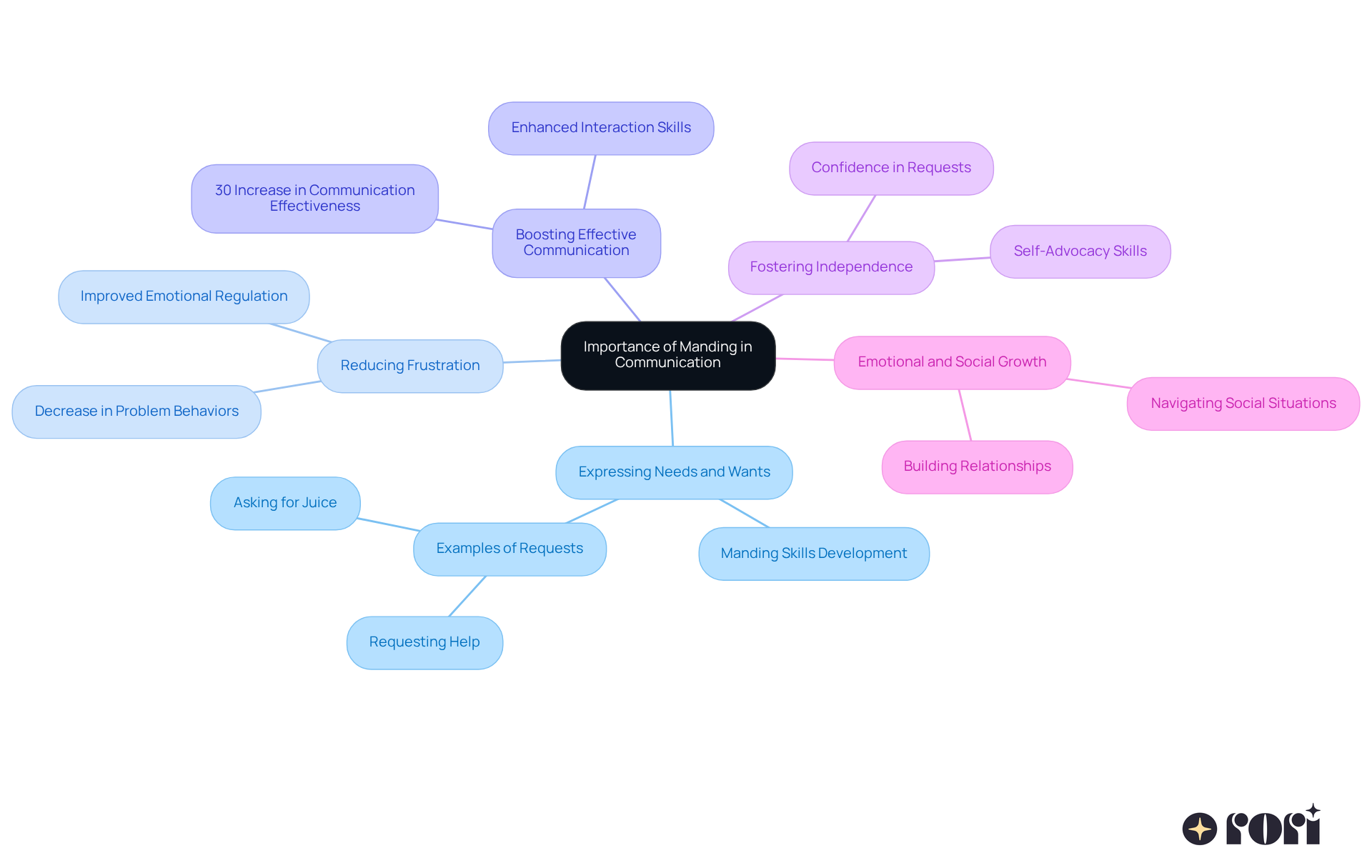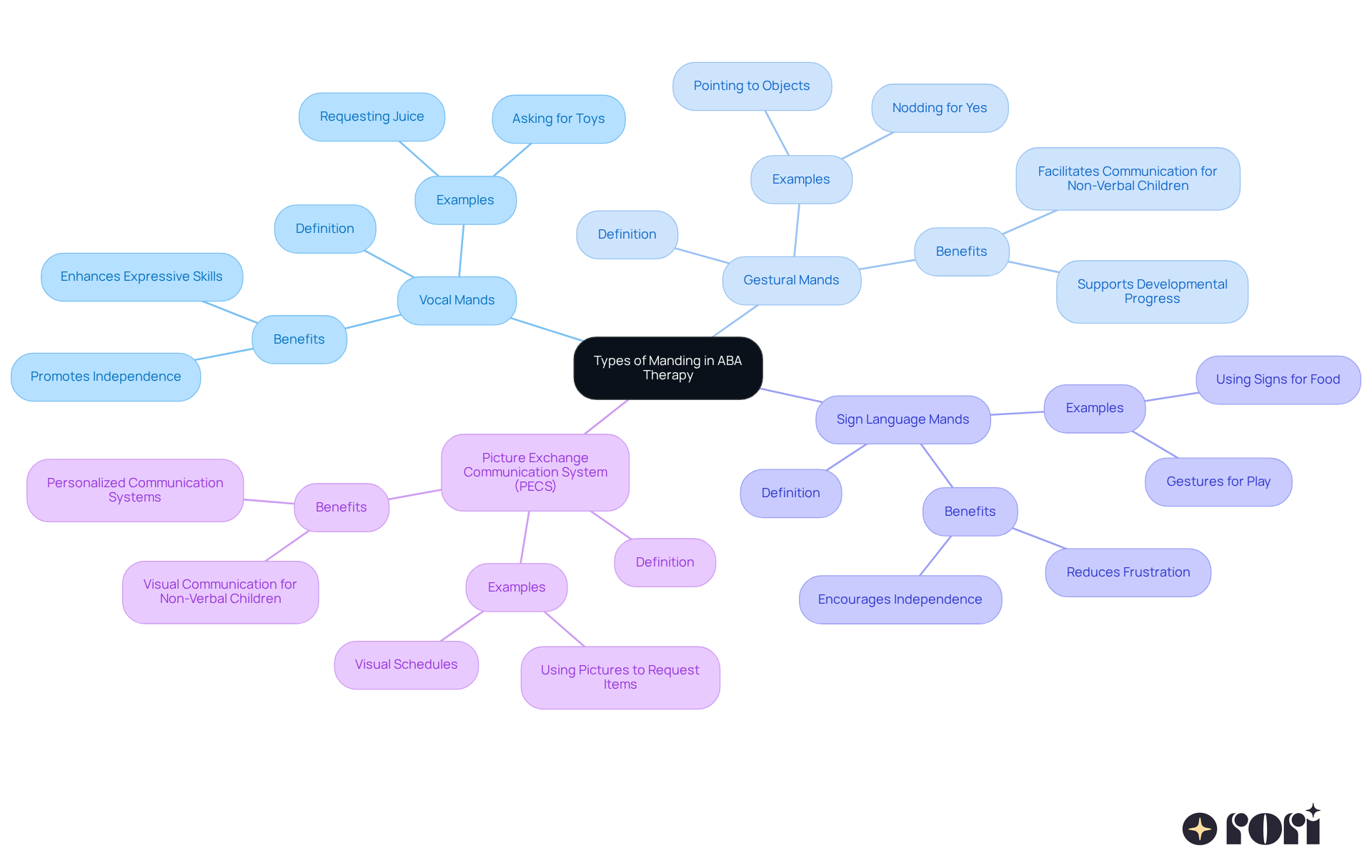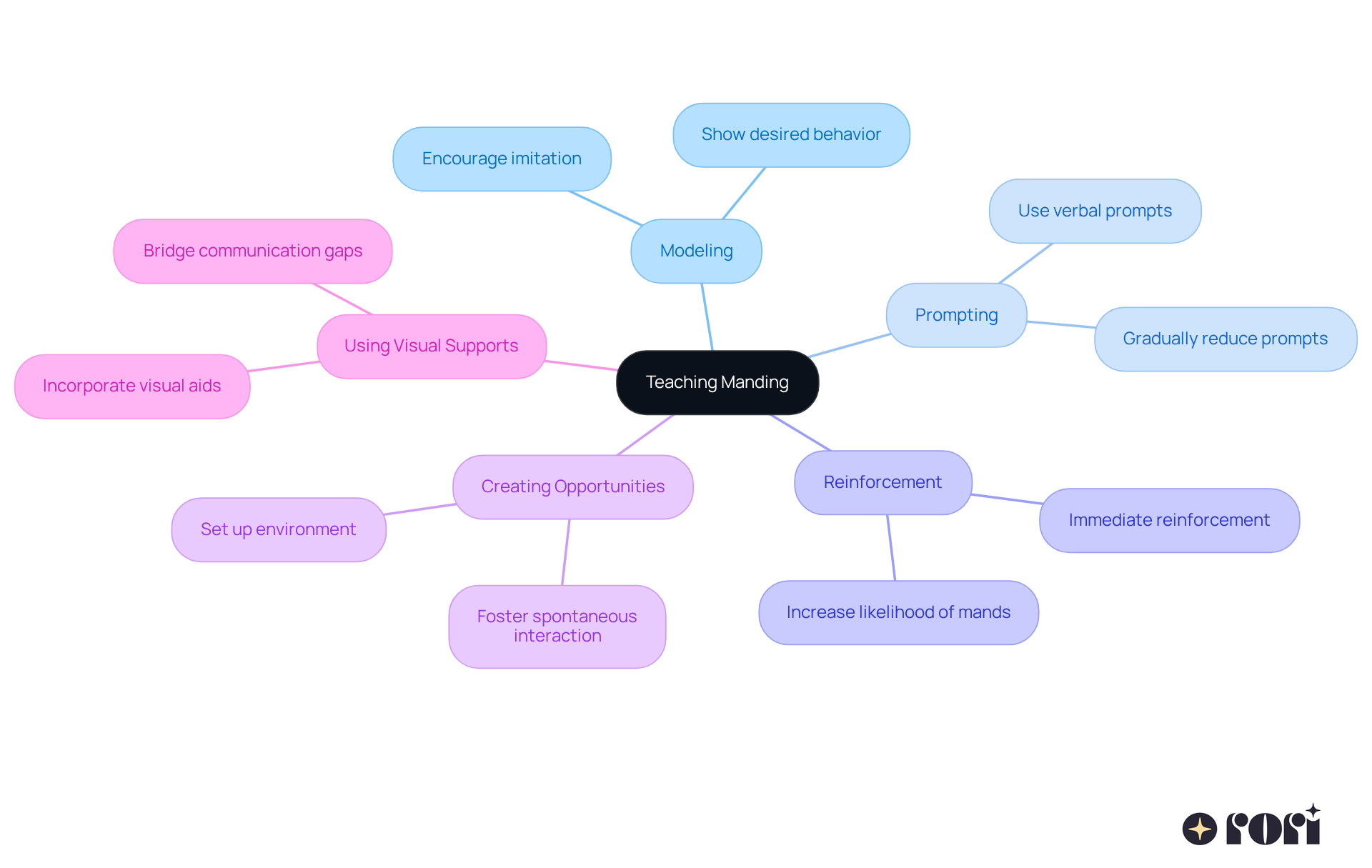In this article, we delve into the concept of manding in ABA therapy, a key communication skill for children with autism. Manding is all about helping our little ones express their needs and wants, which can lead to better communication skills and fewer behavioral challenges.
Research shows that when caregivers are involved in this process, children often request more frequently and enjoy better overall outcomes. Isn’t that encouraging? By understanding manding, we’re taking a significant step towards supporting our children’s communication journey. Let’s explore this together!
Understanding how children with autism communicate their needs is key to helping them grow and thrive. Manding, a vital part of Applied Behavior Analysis (ABA) therapy, allows children to make spontaneous requests—whether through speech, gestures, or other communication methods. This article explores the importance of manding and how it can transform communication skills and behavioral outcomes.
But what happens when traditional ways of communicating aren’t enough? 🤔 How can you, as a caregiver, effectively support your child in mastering this essential skill? Let’s explore this together! We're here to help you every step of the way!
In the world of Applied Behavior Analysis (ABA) therapy, manding meaning aba is all about making spontaneous requests. These requests can be vocal, gestural, or even through alternative methods like sign language or picture exchange systems. It’s often one of the first skills taught to kids with autism, helping them express their needs and wants effectively. When children master this form of communication, they significantly enhance their ability to express desires, which is so important for their social interactions and overall development.
The importance of requesting in autism communication is huge! Research shows that kids who receive effective requesting instruction make notable progress in their communication skills. In fact, 89% of studies indicate an increase in requesting frequency. Plus, successful communication interventions are linked to fewer behavioral challenges, with 76% of young individuals showing a decrease in problem behaviors after focused communication training.
Effective communication interventions often involve:
For instance, showing them their favorite toys while keeping them just out of reach can spark natural requests, encouraging kids to boost their communication skills in everyday situations. And when families get involved in the training process, it makes a big difference! Caregivers who understand ABA principles can consistently reinforce these skills at home, creating a supportive environment that maximizes the impact of the intervention.
It’s also essential to respect the child’s preferences and interests when teaching communication. This ensures that goals are culturally appropriate and meaningful to them. Recognizing various types of requests, like gestural appeals and questions for information, helps clarify how kids can communicate their needs. Additionally, using strategies like intentionally leaving out a piece of a puzzle can effectively encourage spontaneous requests.
Ultimately, this practice is a foundational communication skill that not only helps with basic requests but also sets the stage for more complex language development. By promoting independence and self-advocacy, this practice significantly improves the overall quality of life for individuals on the autism spectrum, allowing them to navigate their world with greater confidence. Educating caregivers about manding meaning aba and its importance further empowers them to support their children’s behavioral goals, leading to better outcomes and a more harmonious family dynamic. Let’s explore this together!

Manding plays a vital role in how our kids interact with the world around them. It helps them express their needs and wants clearly, which can really cut down on frustration and those tough behaviors that often arise when they struggle to communicate. When kids with autism master manding meaning aba, they are able to connect more meaningfully with their environment and the people in their lives. For example, studies show that mand training can boost effective communication by 30% among individuals with autism, highlighting just how transformative this approach can be!
At Rori Care, our clinical leadership team is made up of experienced ABA therapy professionals who are passionate about fostering neurodiversity. They are here to empower caregivers with effective strategies and resources. This training helps caregivers provide better support, leading to informed decision-making and improved behavioral outcomes for our youth. Plus, as kids learn to advocate for themselves—whether it’s asking for a toy, a snack, or help with a task—they gain a sense of independence. This empowerment is so important for their emotional and social growth, helping them navigate their world with confidence!
Just think about it: a young person who once relied on non-verbal signals can now confidently ask for juice. That’s a huge milestone in their expressive development! Ultimately, focusing on manding meaning aba within ABA therapy not only enhances interaction skills but also paves the way for individuals with autism to lead a more fulfilling and independent life. Let’s explore this together!

In ABA therapy, manding meaning aba includes various forms of expression tailored to the unique needs of children with autism. Let’s dive into the primary types:
Vocal Mands: These are verbal requests, like when a child says 'juice' to ask for a drink. Research shows that vocal mands are often the first method of interaction taught. They can significantly enhance a child's ability to express their needs effectively. By understanding and reinforcing vocal mands, caregivers can create a consistent environment alongside professional interventions, leading to better behavioral outcomes.
Gestural Mands: This category includes non-verbal cues, such as pointing to an object they want. Gestural mands are particularly helpful for children who may struggle with verbal expression, allowing them to communicate their desires without words. Caregivers who are knowledgeable about gestural mands can provide better support for their child’s development, making informed decisions in their care strategies.
Sign Language Mands: For non-verbal children, sign language serves as a powerful communication tool. This method enables young individuals to express their needs through gestures, fostering independence and reducing frustration. When caregivers are trained in sign language techniques, they feel more confident in supporting their child's expressive abilities, aligning with measurable developmental goals.
Picture Exchange Communication System (PECS): This approach uses images to help children request items or actions. PECS is especially beneficial for those who haven't yet developed verbal skills, providing a visual way to communicate that can be tailored to each child's preferences. Understanding PECS allows caregivers to create personalized communication systems that meet their child's specific needs, ensuring ongoing assessment and adjustment of strategies.
Every form of interaction plays a vital role in enhancing communication skills and can be adapted to fit each child’s unique abilities and developmental stage. Successfully implementing these methods—vocal, gestural, and sign language requests—has been shown to improve communication skills and manding meaning aba, leading to better overall behavioral outcomes for children with autism. By actively engaging caregivers in this journey, we can foster a supportive environment that promotes informed decision-making and measurable progress. Let’s explore this together!

Teaching manding meaning aba effectively can significantly enhance a child's communication skills in ABA therapy! Here are some friendly strategies that can make a difference:
By using these strategies, you can effectively teach manding meaning aba and enhance your child's communication skills, ultimately improving their overall quality of life. Let’s explore this together! We're here to help you every step of the way!

Manding in ABA therapy is such an important communication tool for children with autism! It allows them to make spontaneous requests and express their needs effectively. This foundational skill not only enhances their ability to interact with their environment but also promotes independence and self-advocacy, which can significantly improve their overall quality of life.
Throughout the article, we’ve shared key insights about manding and its various forms—like vocal, gestural, sign language, and picture exchange systems. Each type plays a vital role in helping kids communicate and reducing frustration, as they learn to articulate their desires clearly. Plus, effective teaching strategies such as:
empower caregivers to support their children's growth in meaningful ways.
Ultimately, understanding and implementing manding in ABA therapy goes beyond just improving communication skills; it’s about nurturing a child's ability to navigate their world with confidence and independence. By embracing these principles and actively engaging in the learning process, caregivers can make a significant difference in their child's growth and success. This not only fosters a more harmonious family dynamic but also paves the way for a brighter future for individuals on the autism spectrum.
Let’s explore this journey together! We’re here to help you every step of the way!
What is manding in ABA therapy?
Manding in ABA therapy refers to the process of making spontaneous requests, which can be vocal, gestural, or through alternative methods like sign language or picture exchange systems. It is often one of the first skills taught to children with autism to help them express their needs and wants effectively.
Why is manding important for children with autism?
Manding is crucial for children with autism as it enhances their ability to express desires, which is important for social interactions and overall development. Research shows that effective requesting instruction leads to significant improvements in communication skills and reduces behavioral challenges.
What percentage of studies indicate an increase in requesting frequency among children after receiving manding instruction?
89% of studies indicate an increase in requesting frequency among children who receive effective manding instruction.
What are some effective communication interventions used in manding?
Effective communication interventions include identifying motivating items or activities, providing appropriate prompts, and reinforcing successful requests.
How can caregivers support the manding process at home?
Caregivers can support the manding process by understanding ABA principles and consistently reinforcing communication skills at home, creating a supportive environment that maximizes the impact of the intervention.
How can a child's preferences and interests be respected during manding instruction?
It's essential to consider the child's preferences and interests to ensure that communication goals are culturally appropriate and meaningful to them.
What are some strategies to encourage spontaneous requests in children?
Strategies include intentionally leaving out a piece of a puzzle or showing children their favorite toys while keeping them just out of reach to encourage natural requests.
What long-term benefits does manding provide for individuals on the autism spectrum?
Manding promotes independence and self-advocacy, significantly improving the overall quality of life for individuals on the autism spectrum and helping them navigate their world with greater confidence.